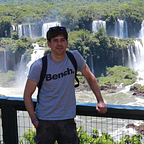Design Sprint structure at the Digital Factory
The Digital Factory is has introduced the use of Design Sprints into the organisation. The process has allowed extra time to ensure the best User Experience is created.
Design sprints are used by some of the biggest companies in the world in order to improve the user experience of the products. It has some clear benefits that are discussed in this article.
The Original Design Sprint Format
The original Design Sprint (Jake Knapp) was designed to take place over 5 days. With the key activities taking place as described below.
Design Sprint 2.0 Format?
The Digital Factory has adopted a more condensed format that evolved from AJ&Smart, one of the companies pioneering this approach. The four day structure of the Design Sprint 2.0, looks like this:
Day 1 (Monday): Map / Sketch (Define challenges and come up with solutions)
Day 2 (Tuesday): Decide / Storyboard (Curate best solutions to go into prototype)
Day 3 (Wednesday): Prototype (Build prototype)
Day 4 (Thursday): Test with users and learn from the feedback
The shorter format has made it more practical to get the key stakeholders in the room for the required time. This first 2 days are critical for the key stakeholders to attend.
Daily Activities
Monday
- Ask the experts 30 minutes in total 4 mins each for 8 people. What are the troubles and issues?
- Each participant to write notes on post it notes. The structure is “How might we” (HMW) solve the issues that are being discussed.
- Gather and group the HMWs, each participant will vote with dot stickers on the most important HMW. The decider votes with four dots.
- The group comes up with a 6 month goal from the priority HMWs. This should be not too narrow and not too wide. Everyone votes once on the goal and the Decider picks the goal.
- Consider what problems / obstacles might there be to stop you getting to your goal. Come up with some Can We’s on post it notes on how to navigate these problems. Pick the the two highest priority. The decider can identify the most important.
- Draw a map of the current process. Start with the end goal.
- Put the top priority HMWs against the current process / user map.
- Produce solutions using techniques such as Lightening Demos and Crazy Eights.
Tuesday
- Vote on the solutions from the previous day. You should end up with a heat map showing the most popular solutions.
- The Facilitator should present each concept back to the group.
- The decider picks the best concept to take forward.
- Come up with user flows for the concept using 6 steps.
- Storyboard the solution 10 steps, this should be the happy path.
Wednesday
- Development of the prototype. This is typically done by UI / UX designers using prototyping tools such as InVision, Adobe XD or Figma.
Thursday
- User testing of the prototype that was developed the previous day. The reactions of users often tell more about a product than just collecting feedback.
At the end of the 4 days the group has created a prototype that is designed to address a strategic goal. This prototype is tested with users on the final day so there is immediate feedback on the effectiveness of the planned work.
